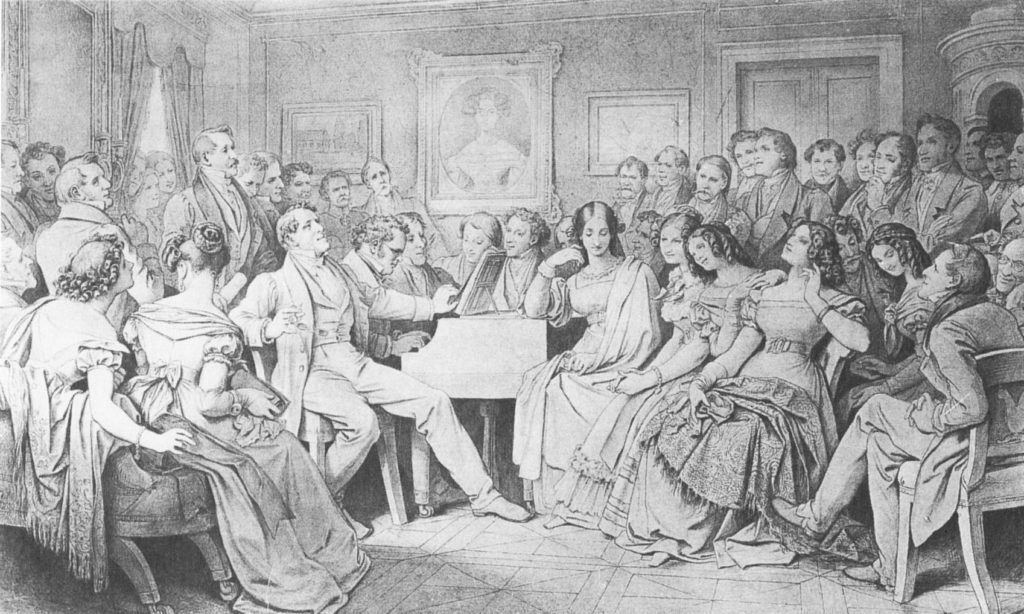The Italian language is renowned for its musicality and romanticism. Few languages are as beautiful to the ear or evoke such strong feelings of love and joy. While many cultures have their own unique way of communicating, Italian stands out due to its melodiousness and poetic nature.
Whether spoken in a hushed tone or shouted with passion, there’s something special about the Italian language that cant be found anywhere else on Earth. From its rich history to its captivating syntax, this article explores why the Italian language sounds so romantic and how it has evolved over time.
1. The Melodic Nature of the Italian Language
The Italian language has been widely praised for its melodic and harmonious nature by linguists and musicians alike. Its unique consonant-vowel pattern gives it a distinctively smooth and pleasant sound, making it one of the most sonorous languages in the world.
The rolling Rs and smooth intonation associated with spoken Italian give it an almost musical quality, making it particularly romantic to the ear. Its abundance of diphthongs, which are blends of two vowels in a single syllable, further enhances its beauty and fluidity of pronunciation.
Moreover, Italian has many sounds that do not exist in other languages, such as gl, gn, or so, adding to its unique character. All these features combine to create an unmistakably lyrical effect when spoken or sung aloud, allowing speakers to express their emotions more effectively. With its rich history and vibrant culture, it’s no wonder that Italian has become known as one of the most beautiful-sounding languages on earth. And if you want to say I love you in Italian, it’s “Ti amo.”
2. The Richness and Sophistication of Italian Vocabulary

The Italian language has almost unparalleled richness and sophistication when it comes to its vocabulary. From the poetic words of Dante Alighieri’s Divine Comedy to the musicality of modern Italian literature, this language has a vast selection of words and phrases that bring life to any written text. Amongst these are words with multiple meanings, intricate expression-based shades of meaning, the subtle distinction between some verbs or nouns in different contexts as well as sophisticated grammar structures.
All this contributes to creating an atmosphere of emotionality and depth without compromising on clarity or accuracy. Furthermore, because Italian is considered one of the romance languages – similar to Spanish and Portuguese – it often holds a certain charm for many native English speakers who find beauty in its pronunciation and intonation even if they don’t understand what is being said. This quality allows writers using the Italian Language to craft their stories with great precision while still having plenty of space for creativity at each step along the way.
3. Exploring the Intricacies of Italian Phonology
When discussing the intricacies of Italian phonology, it is impossible to ignore its musicality. The language is filled with a variety of different sounds and tones that lend themselves beautifully to the creation of melodies. To truly appreciate this aspect, one must understand the complexity hidden beneath its surface; from the subtle intonations in different dialects to how certain syllables are accentuated or glided over.
Additionally, there are numerous rules governing where words can be broken up and which consonants can occur next to each other. All these factors come together to create an experience that is truly unique among Romance languages. By exploring these nuances further, we may gain greater insight into why Italian has become so renowned for being romantic-sounding and why it continues to charm people around the world today.
4. How the Musicality Enhances the Romanticism of Italian Speech

The musicality of the Italian language is one of the most romantic aspects of its speech. The inflections and intonations of this language make it incredibly expressive but also lend themselves to a certain level of romance that other languages can’t quite achieve. Through its unique sound, the musicality in Italian enhances the romanticism, making it an ideal choice for lovers exchanging words with each other. A large part of this comes from how Italians use their vowels when speaking: they tend to elongate them and emphasize certain syllables over others which adds a softness and sensuality that cannot be found in other dialects.
As well as this, there are phrases that are distinctively used by native speakers which carry meanings through emotion rather than a literal translation – something that helps add depth and atmosphere to any conversation between two people who share such a common language. This is all further enhanced by how words are spoken in rapid succession – often overlapping or blending together with ease due to the way consonants can be softened into sounds not seen elsewhere in Europe or even beyond it!
This creates an effect akin to singing or humming which brings life and enthusiasm into each sentence uttered – no matter what subject is being discussed. Finally, as if all these weren’t enough reasons why Italian has come to be known as one of the most romantic languages out there today, there’s still more: Italians possess an incredible aptitude for punning which involves playing on both the pronunciation and meaning behind words; thus allowing people creativity within conversations while maintaining those essential bursts of energy needed for any romance-filled moment!
5. Analyzing the Influence of Cultural Heritage on Modern Usage
When exploring the impact of cultural heritage on the modern usage of the Italian language, it is clear that centuries of history and tradition have shaped the way we speak today. From Latin to Romance languages, much has changed in terms of syntax, grammar, and vocabulary over time. But what remains constant throughout this evolution is the musicality inherent within Italian – something which continues to make it so romantic today.
This musicality can be traced back through centuries to Italy’s long-standing poetic tradition – with its use of rhetorical devices such as alliteration, internal rhyme, and assonance helping give rise to a unique soundscape when spoken aloud. For example, words often end in vowel sounds rather than consonants making them flow together more naturally; while compound nouns are used instead of articles for added emphasis or rhythmical effect.
These distinctive features are most evident when Italians converse casually amongst each other – where the creative license is given to explore more playful expressions; at times embodying an almost theatrical performance in order to add drama or comedic effect. This demonstrates how deeply embedded these linguistic traits are within their culture – providing a captivating soundtrack whenever conversations take place!




